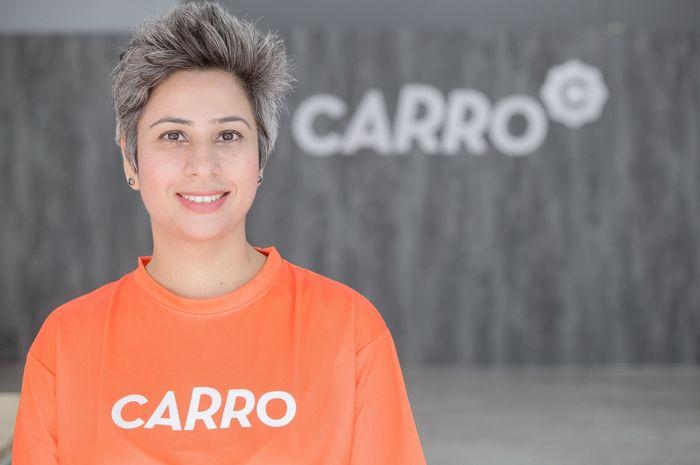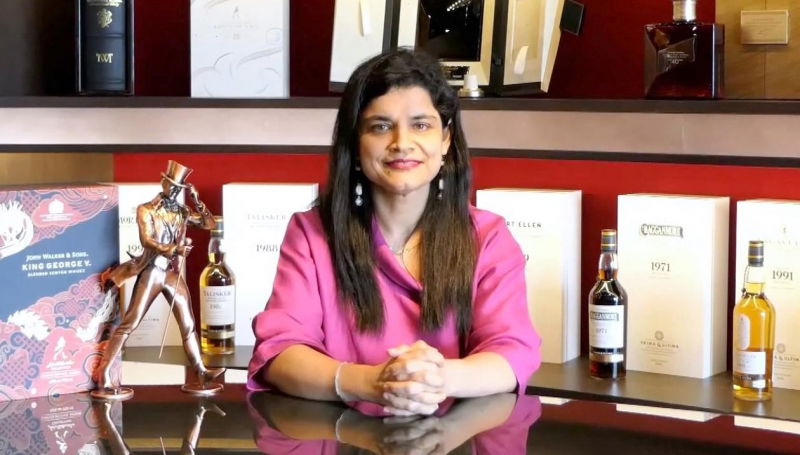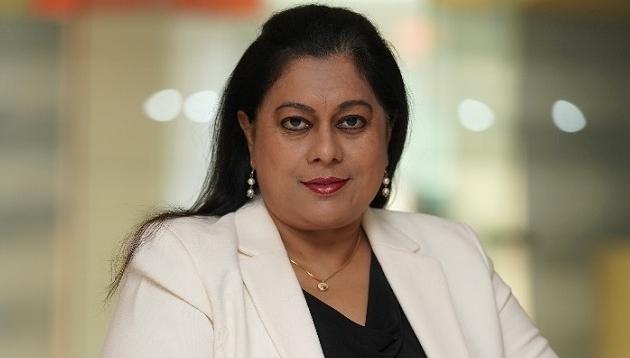![#ExplainIt: Empowerment and stereotypes [Video]](https://marketing-interactive-assets.b-cdn.net/images/sg/content-images/explain_it_-_iwd_2021.jpg)
#ExplainIt: Empowerment and stereotypes [Video]
share on
We have long accepted that advertising plays a huge role in shaping the perception of women. And to be fair, many brands are now consciously trying to ensure proper representation of women in their communications. Mums doing laundry are now replaced with images of confident girl bosses (still, sometimes, with wind blowing in her hair) or stories of empowered women through content marketing initiatives. And while these changes are a welcomed move by most, are these changes really being seen and felt by women? Well, according to a 2020 research by YouGov, maybe not.
According to YouGov, while nearly half of women (48%) think that female representation in advertising has become more positive over the past five years, only 7% say the representation of women in advertising has become “much more positive”. Around 41% say it has become “only a little more positive" - and over a quarter (27%) have noticed no change whatsoever. Around 8% say that the ads have gotten worse. So if brands are indeed making a huge effort to portray women in a positive light, their ads might not be resonating well enough.
In a conversation with MARKETING-INTERACTIVE, Cindy Gallop, former advertising executive and CEO of Make Love Not Porn, said that in our still male-dominated industry, advertising has stereotyped and objectified women for far too long - "ironic, given advertising's target is women as the primary purchasers or influencers of purchase", she said, adding:
When we have a female-dominated industry with women creating, approving, casting and directing the ads, we'll see a dramatic shift towards gender equality in the real world.
Adding on to the conversation, R3 founder Goh Shufen said, we are now well past the debate of whether advertising influences how people view themselves and the world. “The question now is one of agreement and action. What does it mean to 'accurately' portray women in advertising? And what is the best course of action to ensure we continuously move in the right direction?” she said
Goh believes that the biggest challenge for Asia when it comes to advertising portrayals of women is coming up with criteria that describes what we are aiming for. “The criterion needs to be respectful of our multicultural society. Trying to operate in a way that ignores existing cultural and social norms is fooling ourselves and might hurt rather than help. In addition, the agenda needs to be led by advertisers across the region,” she said.
In the US, for example, the Association of National Advertisers, have a like-minded initiative called SeeHer which aims to increase the percentage of accurate portrayals of women and girls in US advertising and media by 20% by 2020. Meanwhile, the UK’s Advertising Standards Authority also introduced a ban on “harmful gender stereotypes”.
Goh added that if marketers and advertisers in the region, as a collective, can agree on guidelines as to how women and girls should be portrayed in advertising, and have the commitment from advertisers that they will use those guidelines as part of the approval process, we will be on our way.
Comedian Sharul Channa, who has also worked with organisations such as AWARE Singapore, added that while most marketers in Asia are becoming conscious that the ads they release into the market do not create a sense of insecurity in women, the public is still being fed content asking them to become better versions of themselves - usually these forms of "betterment" revolve around physical attributes.
“I still don't understand why a certain mascara keeps promising lashes that are three times longer. What are we going to do with such long lashes - blink our eyes and sweep the floors? Although the promise of giving us ‘fairer’ skin has changed to ‘clearer skin’, the age when you are now considered old has shifted to 30! Why do we need anti-ageing creams at this age? And no, women will not drop all their work and run after a man who has just used your company’s new irresistible cologne,” said Channa.
“Although I have seen some change in the way the advertising industry has shifted in its approach in helping some products become more ‘woke’, I think the Asian market has a long way in waking up its ideas to women empowerment, equality and making women feeling secure before robbing them of their sense of security - especially as ads now involuntarily pop up in our faces on social media platforms," she added.
Charlotte Wilkinson, founder of hello sister, added that the media and advertising community as a whole needs to come closer together to ensure appropriate representation of women rather than unrealistic ones so as to de-stigmatise issues that are entirely normal for women.
Anti-stereotyping isn't about being 'woke'; it's about being more authentic and real, which consumers are already demanding from their brand relationships.
"When done effectively, we can drive perception change quite dramatically. For example, in India, the Ariel 'Share the load' campaign in 2015 changed opinions quickly, with 79% of men believing that laundry was the women's job in 2015 to only 41% dinosaurs men saying the same by 2018, even if we still need men actually to give us a hand with the laundry, attitudes are at least changing,” she added.
Women in the workforce
When it comes to women in the workforce, a majority of women (98%) want men to help address gender inequality issues, yet less than half of men indicated being ready to help. According to a study by LEWIS, conducted in support of the global HeForShe movement by UN Women, male employees were more than twice as likely as female colleagues to say that gender inequality is no longer an issue facing women.
At the same time, the COVID-19 pandemic has resulted in more stress, fewer benefits, and job insecurity among women. The study said 24% of women were required to take on new duties as part of their job compared to 22% of men. Male employees said they saw more opportunities for financial raises (13%) than did female employees (11%), and over a quarter of women agree they have been overlooked for a promotion because they have children versus 16% of men.
Meanwhile, a separate study by LinkedIn found that only 14% of working professionals in Singapore strongly agree that gender diversity is a priority in their organisation. While many women in Singapore now have the flexibility to work from home, they face other barriers when it comes to achieving opportunities, including lack of time (62%) and a difficult job market (58%).
While close to six in 10 Singaporeans say that gender equality has improved compared to their parents’ time, many still feel gender bias continues to exist in the workplace. While 70% think that gender equality is an important value for a fair society, half of the respondents believe that it has already come far enough and has been achieved to a satisfactory degree. Furthermore, over four in 10 think that gender equality is impossible to achieve, and this sentiment is higher among men.
#ExplainIt
This year's International Women's Day (IWD) urges individuals to challenge and call out gender bias and inequality and create an inclusive world, as part of the #ChooseToChallenge theme. "From challenge comes change, so let's all choose to challenge," the website said.
As women rise up in leadership positions, they will also encourage those around them to grow. In this second edition of #ExplainIt, MARKETING-INTERACTIVE speaks to three female leaders in Southeast Asia to find out how they have helped others to grow as they climbed the ranks in their organisations.
Click on the images below to hear their views.
1. Manisha Seewal, group CMO, Southeast Asia, CARRO and CEO, Jualo.com
2. Preeti Razdan, MD, Southeast Asia, Diageo
3. Sutapa Bhattacharya, GM for strategic communication and branding, Tenaga Nasional
What are brands doing
Meanwhile, brands including Twitter and Amazon are also showing support for IWD. Twitter, for example, created a special emoji for IWD which will be made available throughout the month of March. It will be actuated when people Tweet with the following hashtags: #InternationalWomensDay, #WomensDay, #WeAreWomen, #ActForEqual, #IWD2021, #IWD, and #GenerationEquality. It has also partnered with more than 40 creators across Southeast Asia - Indonesia, the Philippines, Singapore and Thailand - to create a #SheInspiresMe video tweet in which they share about the women that inspire them, and why. They will also tag three other people to encourage them to join the campaign. This series of videos will be tweeted from until 19 March to pass on inspirations to others on Twitter.
Similarly, Amazon Singapore has set up a dedicated online storefront to showcase stories and products offered by 12 women-owned businesses over the next four weeks - from craft supplies to baby and maternity essentials. Amazon seeks to inspire more entrepreneurs and consumers to #ChooseToChallenge gender stereotypes and empower local business owners, regardless of their gender, to sell online and scale globally. It's spokesperson told MARKETING-INTERACTIVE previously that it will be sharing video content on its Instagram page, alongside its collaboration with a few key influencers throughout March to promote the dedicated storefront.
MARKETING-INTERACTIVE's Content 360 Week is back from 6 to 8 April this year! Super charge your content production, distribution and monetisation strategies by learning from brands such as NBA Asia, P&G, Malaysia Airlines, and Marriott International, among others. Sign up today!
Related article:
#ExplainIt: What do these branded red packet designs mean? [Video]
Amazon SG celebrates women-run biz with 4-week dedicated storefront
share on
Free newsletter
Get the daily lowdown on Asia's top marketing stories.
We break down the big and messy topics of the day so you're updated on the most important developments in Asia's marketing development – for free.
subscribe now open in new window



